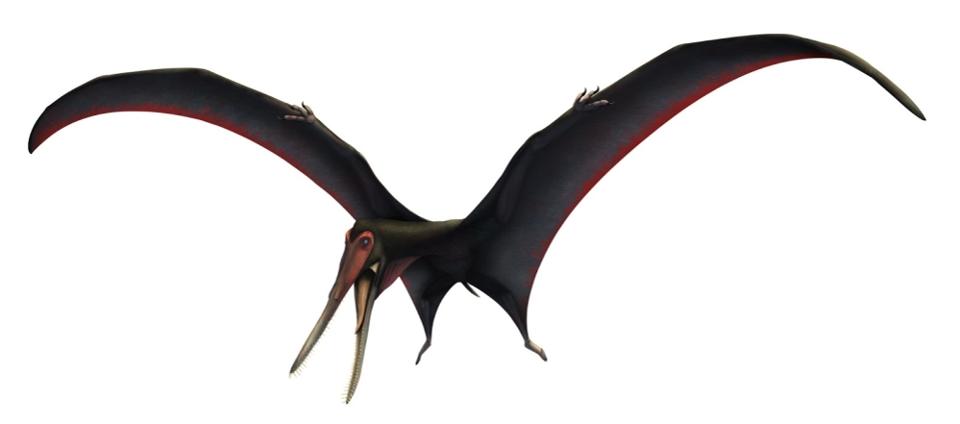
Illustration of the new described pterosaur species Targaryendraco wiedenrothi by Vítor Silva, from … [+]
The fossil of a pterosaur, a group of flying reptiles ruling the Mesozoic skies, was named after the flying creatures featured in the popular fantasy world of Game of Thrones.
The fossil was discovered in 1984 by amateur fossil hunter Kurt Wiedenroth in 130-million-year-old sediments excavated in a clay pit at Engelbostel, near Hanover in northern Germany. Six years later, Wiedenroth donated the specimen to the natural history museum in Stuttgart. The fragmentary fossil, including ribs, the long bones of the wings and the lower jaw, was first classified as Ornithocheirus wiedenrothi, but new research shows some particular anatomical features, prompting a taxonomic reevaluation of the specimen.
Based on the unusual narrow jaw, distinct from the rounded jaw of toothed pterosaurs classified as Ornithocheirus, the fossil was reassigned into an own genus, named Targaryendraco, after the House Targaryen, a noble family in the fantasy world created by American novelist George RR Martin. The Targaryen sigil is a three-headed red dragon breathing flames on a black background. Lead author Rodrigo Pêgas, a palaeontologist at Federal University of ABC in São Bernardo do Campo, Brazil, and Game of Thrones fan, and his co-authors chose the name because the dark permineralized bones of Targaryendraco reminded them of the Targaryen symbol, and also because pterosaurs have inspired some biological aspects of the Game of Thrones’ reptiles. Unlike a classic dragon, depicted with four legs and two wings, RR Martin’s winged wyvern has just two hind legs and two wings, like the extinct pterosaurs.
Unlike the wyverns of Westeros, Targaryendraco lived in a coastal environment and probably fed on fish, as the slender jaw and the sharp teeth, adapted to catch and hold slippery fish, suggest.




















![[Book Review] The Blade Itself (The First Law Trilogy) by Joe Abercrombie](https://bendthekneegot.com/wp-content/uploads/2018/01/1516047103_maxresdefault-218x150.jpg)


















